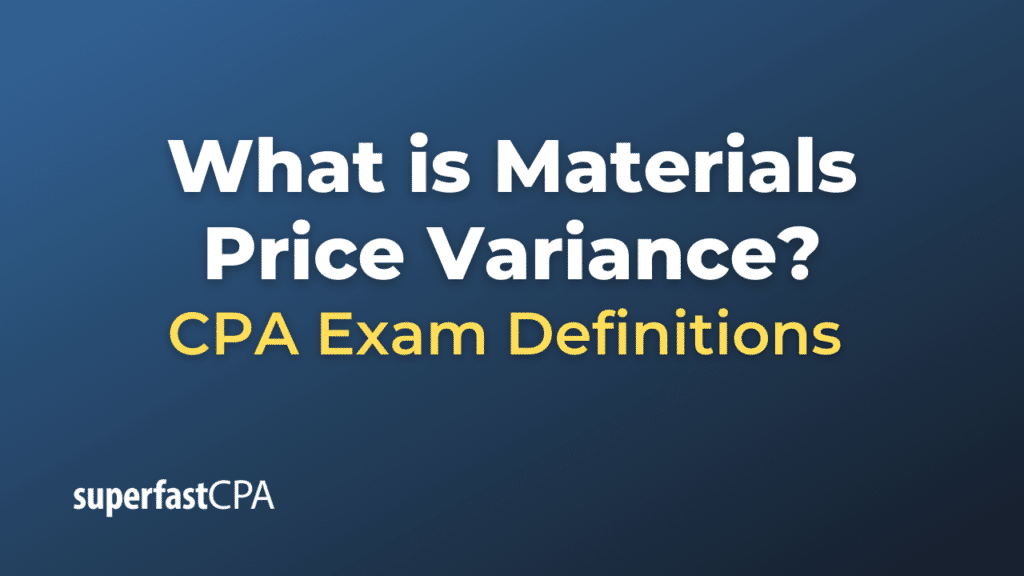Materials Price Variance
Materials Price Variance is a concept used in management and cost accounting to measure the difference between the actual cost of direct materials and the standard cost of those materials. If the actual cost is higher than the standard cost, the variance is unfavorable because it’s costing the company more than expected to produce its products. If the actual cost is lower than the standard cost, the variance is favorable because it’s costing the company less than expected.
The formula for calculating Material Price Variance is:
Material Price Variance = (Actual Quantity * Actual Price) – (Actual Quantity * Standard Price)
In this formula:
- Actual Quantity is the amount of material that was actually used in production.
- Actual Price is the amount the company actually paid per unit of material.
- Standard Price is the amount the company had budgeted or planned to pay per unit of material.
Materials price variance analysis can help a company identify problems with its purchasing procedures (such as paying too much for raw materials) or benefits from strategic purchasing (such as volume discounts). Understanding this variance can assist in improving future cost estimates, setting selling prices, and managing overall profitability.
Example of Materials Price Variance
Suppose a company manufactures wooden furniture. For a specific product, the standard cost for the wood needed is $10 per unit. In a given period, the company plans to produce 1,000 units of this product, so they budget for $10,000 for wood materials ($10/unit x 1,000 units).
However, due to an increase in market prices, the actual cost of the wood is $12 per unit. Given they produced 1,000 units as planned, the actual cost for materials comes to $12,000 ($12/unit x 1,000 units).
The Material Price Variance can be calculated as follows:
Material Price Variance = (Actual Quantity * Actual Price) – (Actual Quantity * Standard Price)
= (1,000 units * $12/unit) – (1,000 units * $10/unit)
= $12,000 – $10,000
= $2,000
In this case, the Material Price Variance is $2,000 unfavorable, because the company paid $2,000 more for the raw materials than they had planned in their standard costs. This unfavorable variance might prompt the company to investigate why the actual cost was higher than the standard cost and take action to mitigate such variances in the future, such as negotiating better prices with suppliers or finding alternative materials if possible.













